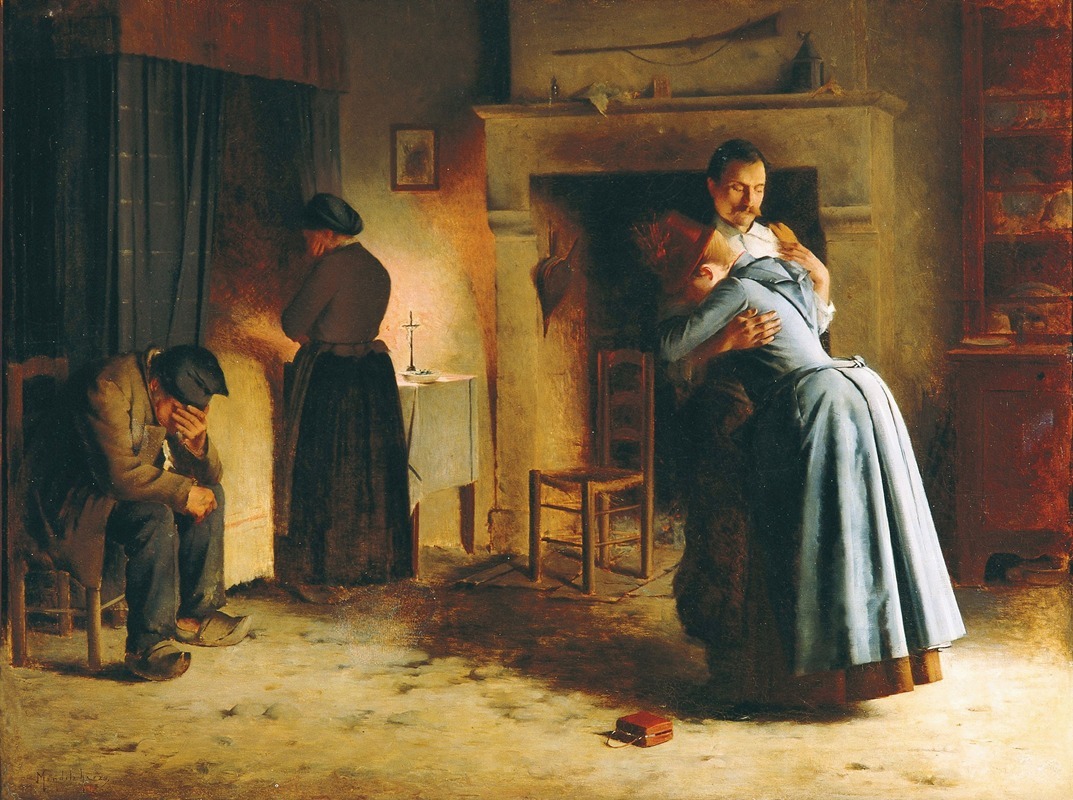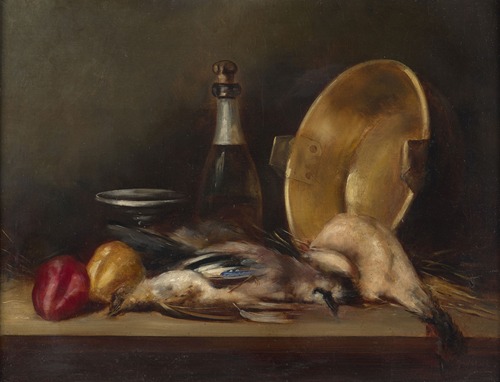

Graciano Mendilaharzu was a 19th century Argentine painter of Basque-French origin. Famous for his still life, genre and decorative allegory work, his most famous painting is La vuelta al hogar.
Born in 1856 in Barracas al Sud (now Avellaneda), of Basque-French parents, he showed a vocation for painting from an early age and was a protégé of Martin Boneo, studying with him in Argentina. In 1873 he left for France, where he settled in Bayonne, entering a school of drawing and painting of the commune to later be awarded several prizes between 1874 and 1875, leaving several of his paintings in a museum in the area. There he studied painting with Achille Zo, with whom he maintained a long friendship and correspondence. Two years later he settled in Paris where he studied with the artist, also from Bayonne, Léon Bonnat. He exhibited regularly at the Paris Salon between 1879 and 1886. He found it very difficult to survive in Europe when his family could no longer support him. At the beginning of the 80's a scholarship was discussed in the Senate of the provincial government, which reached public status in the press. He received a pension in 1881 and returned definitively to Buenos Aires in 1889, after a first return in 1886, when he was commissioned to paint the panels of the Congress Hall in the city of La Plata. During his long stay in Paris he received assistance and painted portraits commissioned by Argentines who lived there, such as Carlos Vega Belgrano, Rufino Varela and, above all, Ignacio Pirovano.
He then decided to settle in Paris, where he enrolled at the Académie Julian and continued his training under the tutelage of Léon Bonnat around 1876, with whom he also worked in Bonnat's studio, in order to pay expenses and expenses. It is during this period that he would paint his culminating work, The Return Home, which he would take with him to his native country on his return.
He returns ten years later, in 1886, to Argentina, settling in Buenos Aires, where he is put in charge of the decoration of the session hall of the Legislature of the Province of Buenos Aires, in the city of La Plata. To carry out this task, he undertook another trip to Paris in 1888, to Bonnat's studio, where he made some allegories and decorations on canvas with marouflage, as well as some portraits for the session hall. It is during this second stay where he began his instruction in the still life genre with the realist painter Antoine Vollon, adding historical paintings and portraits to his work.
After his return and after completing his work in the legislature, he opted to stay and settled permanently in Argentina in 1889, at the age of 33, where he would be inspired by the themes and landscapes of the country to portray country scenes and a variety of still life works. He married a woman named Valentina Seminario, and it was during this period when he produced works such as the Portrait of Gervasio Méndez, of 1891, where he immortalizes the poet from Entre Ríos who had been prostrated by a progressive paralysis since 1876. The painting was made with the purpose of raffling it for the benefit of Méndez, but the raffle only took place after the painter's death, in the posthumous exhibition organized by Eduardo Schiaffino in 1894.
After the birth of his first and only son, his reason was affected. The isolation and lack of stimulus that he found in the country disturbed his judgment. He was momentarily confined in a sanatorium, but soon after leaving he had to be hospitalized again due to the delicacy of his condition. The painter committed suicide in 1894, at the age of 38, by throwing himself from a window of the same building of the sanatorium where he had been interned.
Part of his work was donated to various institutions by his widow, Valentina Seminario, and his work is now exhibited in several museums, including the Museo de Arte de Tigre, the Museo Benito Quinquela Martín and the Museo Nacional de Bellas Artes de Argentina.

